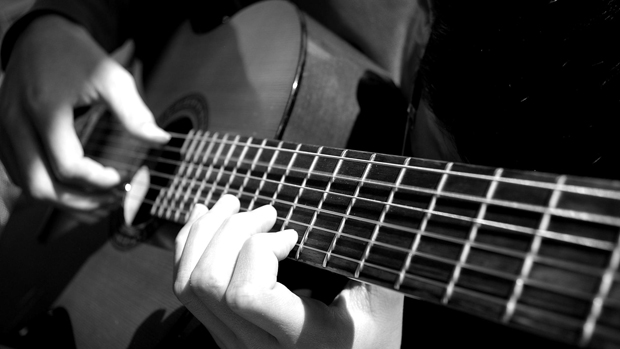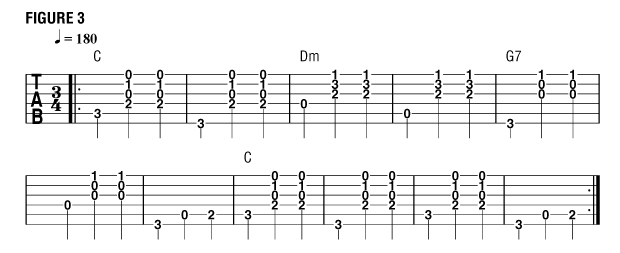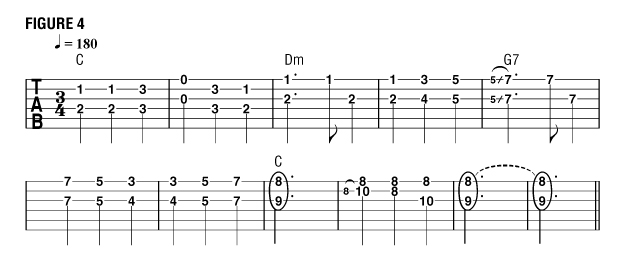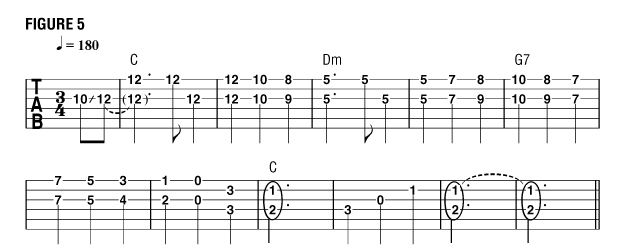Sixths Sense

Don’t let the term diatonic harmonic interval scare you; it simply means two notes from the same scale played at the same time.
Harmonic intervals are particularly useful on the acoustic guitar because they lend heft to single-note lines, especially up the neck, and they are staples of blues, country, R&B and traditional Spanish and Latino music.
In a previous lesson we discussed one such interval (the third), and this time we’ll look at its cousin, the sixth.
To recap: Diatonic harmonic intervals are constructed by combining each note of a key’s scale with a note a number of scale steps away. For example, in the key of C major, play C together with E (three steps above), D with F, E with G, and so on, and you have a scale harmonized in thirds.
This translates into a series of interval shapes on the fingerboard; once you’ve memorized them you should be able to harmonize a melody on the spot.
So how are thirds and sixths related? If you reverse the relationship between C and E – this is, put E on the bottom and C on the top – you have six scale steps (a sixth) between the lower and upper notes (E-F-G-A-B-C); Figure 1 shows the third and sixth together.
Flipping the order of an interval’s notes creates an inversion, and because they share the same notes, inverted intervals also share a similar sound. In other words, harmonizing a melody in sixths produces an effect like that of harmonizing it in thirds, although thirds sound thick compared to the light and airy sixths.
Get The Pick Newsletter
All the latest guitar news, interviews, lessons, reviews, deals and more, direct to your inbox!
Figure 2 shows diatonic sixths played through one octave of the C major scale, with the melody note in each instance harmonized with the note six scale steps below it. Fret all of the intervals with your second finger on the lower of the two notes, and use either your first or third finger for the melody, this will help simplify fingerings when you start moving quickly.

Let’s put sixths to work over the same country-style waltz (reminiscent of Marty Robbins’ “El Paso”) we used to explore thirds (Figure 3). Figure 4 begins at the lower end of the scale and works up to the high C. To add color to the phrases, try picking the notes separately (bar 3), sliding from one interval to the next (bar 5), and add a bit of vibrato (also bar 5) by shaking your wrist while holding the notes. Bar 9 ends with an extra fill that completes the phrase.


Figure 5 works from the opposite direction, starting high and winding down to C. Play the opening interval by picking the third string and sliding up from two frets before picking the first string.

This evocative way of phrasing sixths is a particular favorite of the great R&B guitarist Steve Cropper, who used it to great advantage on such classic recordings as Sam & Dave’s “Soul Man” and Otis Redding’s “Dock of the Bay.”
"Upgrading from your entry-level acoustic opens the door to an entirely new world of tonewoods, body shapes, and brands": 6 signs it's time to upgrade from your first acoustic guitar
"I'm past my prime": 5 common excuses for not learning the guitar – and 5 body and mind-boosting reasons you should

![John Mayer and Bob Weir [left] of Dead & Company photographed against a grey background. Mayer wears a blue overshirt and has his signature Silver Sky on his shoulder. Weir wears grey and a bolo tie.](https://cdn.mos.cms.futurecdn.net/C6niSAybzVCHoYcpJ8ZZgE.jpg)

![A black-and-white action shot of Sergeant Thunderhoof perform live: [from left] Mark Sayer, Dan Flitcroft, Jim Camp and Josh Gallop](https://cdn.mos.cms.futurecdn.net/am3UhJbsxAE239XRRZ8zC8.jpg)





